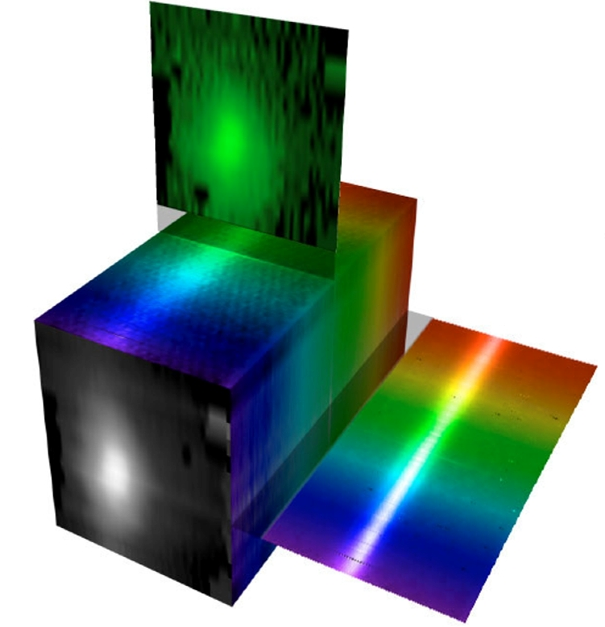2024-12-25 ∾ GaussianPrior
Since v1.35, galpak has gaussian priors with gprior_parameters
GalPaK 3D is a tool to extract the intrinsic (i.e. deconvolved) Galaxy Parameters and Kinematics from any 3-Dimensional data. The algorithm uses a disk parametric model with 10 free parameters (which can also be fixed independently) and a MCMC approach with non-traditional sampling laws in order to efficiently probe the parameter space.
More importantly, it uses the knowledge of the 3-dimensional spread-function to return the intrinsic galaxy properties and the intrinsic data-cube. The 3D spread-function class is flexible enough to handle any instrument.
One can use such an algorithm to constrain simultaneously the kinematics and morphological parameters of (non-merging, i.e. regular) galaxies observed in non-optimal seeing conditions. The algorithm can also be used on AO data or on high-quality, high-SNR data to look for non-axisymmetric structures in the residuals.
If you use galpak, please acknowledge Bouché, N. et al. 2015 and cite the ACL entry ascl:1501.014
Since v1.35, galpak has gaussian priors with gprior_parameters
Since v1.34, galpak is compatible with astropy v>5.1 and 6.0
Since v1.32, galpak is compatible with Maoppy.
Since v1.30, galpak is pypi compatible here.
Since v1.20, galpak can work with EMCEE walkers (slow); and can read/write models and instrument from configuration file
Since v1.16, galpak has several new rotation curves: NFW, Burkert, freeman disk
Since v1.12, the PA definition is anti-clockwise from y-axis (matching the disk model)
Since v1.11, galpak has several new features : autorun (API) for autotune randomscale / plot_geweke for convergence / plot_vprofile with errors from chain
Since v1.10, galpak is Python >3.5 compatible.
Since v1.8.8, galpak is Python3 compatible.
doit implementationSince v1.5.0, galpak supports doit tasks and python setup.py install.
Since v1.3.0, galpak can now work with ALMA data.
Set the lsf_fwhm to something less than 1 channel.
